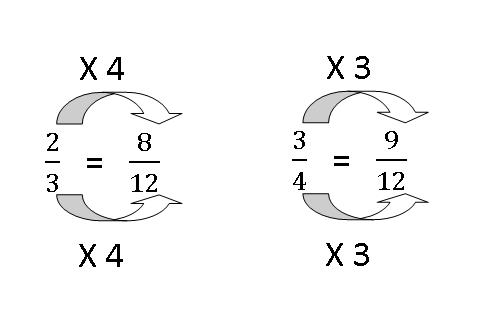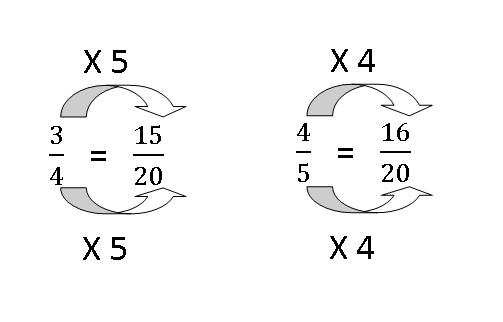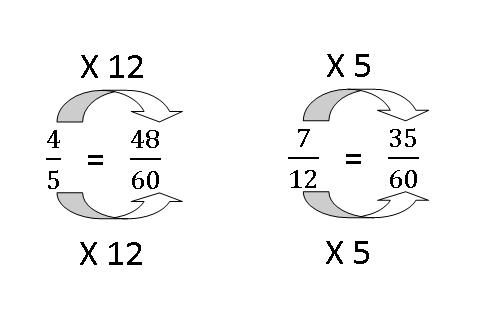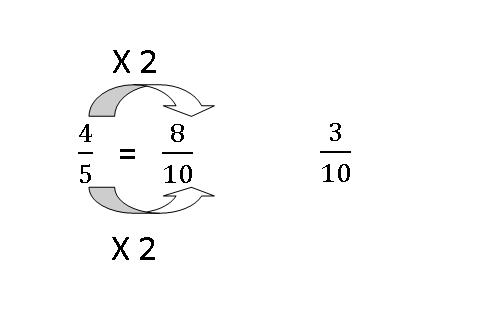Model Method - Questions and Answers
Question posted by Tina from Singapore:
Grade/Level: Primary 2
Question:
Which is the largest fraction? How to solve?
2/3, 3/4, 4/5, 7/12, 3/10
How to explain to my P2 child which fraction if greater or smaller when it is a mixed fraction?
Answer:
The question you posted is not intended for her level. Such questions require the concept of equivalent fractions which is generally taught only in Primary 3 and common multiples which is taught in Primary 4 in the Singapore Math syllabus . You can try to introduce her to equivalent fractions with fraction strips (available from teaching aids shops) or you can make your own. After she is comfortable with fraction strips and equivalent fractions, you can help her transit into working the sums without fraction strips.
Step 1: Compare 2/3 with 3/4.
Find the common multiple of 3 and 4, which is 12. Then convert both fractions into their respective equivalent fractions to facilitate comparison.

Thus, 3/4 is larger than 2/3, so 2/3 is dropped from further comparison.
Step 2: Compare 3/4 with 4/5.
Find the common multiple of 4 and 5, which is 20. Then convert both fractions into their respective equivalent fractions to facilitate comparison.

Thus, 4/5 is larger than 3/4, so 3/4 is dropped from further comparison.
Step 3: Compare 4/5 with 7/12.
Find the common multiple of 5 and 12, which is 60. Then convert both fractions into their respective equivalent fractions to facilitate comparison.

Thus, 4/5 is larger than 7/12, so 7/12 is dropped from further comparison.
Step 4: Compare 4/5 with 3/10.
Find the common multiple of 5 and 10, which is 10. Then convert 4/5 into its equivalent fraction with denominator 10 to facilitate comparison. There is no need to convert 3/10 as its denominator is already 10.

Therefore, 4/5 is the largest fraction among the 5 fractions given.




